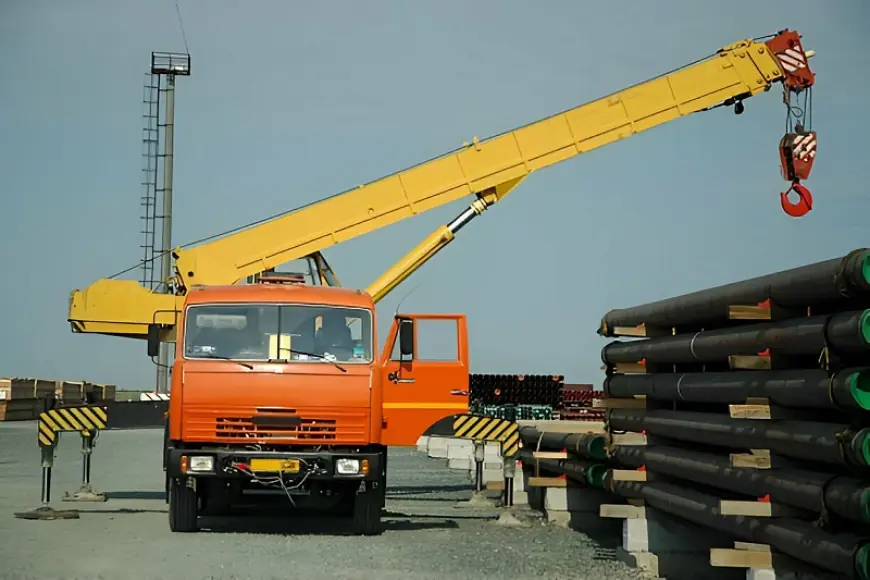Exploring the Environmental Impact of Crawler Cranes: Challenges and Solutions
Delve into the environmental challenges posed by crawler cranes. Learn about effective solutions to reduce their impact and promote sustainable practices.

Our boundless pursuit of infrastructural growth holds the inevitable consequence of environmental impact. With our increasing inclination towards high-rise towers and advanced infrastructure, we question the structures that seemingly power our exploration of vertical space: cranes, specifically crawler cranes. But what is the environmental footprint of these powerful machines? How can we reconcile efficiency and eco-responsibility in such complex, heavy-duty equipment?
Allow me to steer your thoughts on an enlightening journey to traverse the challenging terrains of crawler cranes' environmental impact, weaving through their problematic aspects before exploring potential solutions that hint at a sustainable future, a fusion of purpose and prudence. This blog will dig into the essence of crawler cranes and their role in architectural development, then consider the environmental implications of their use and, finally, the introduction of eco-conscious practices and technologies into the sector.
The Backbone of Industry: Understanding Crawler Cranes
The crawler crane, so-called for its caterpillar-like treads, is an engineering marvel that boasts outstanding stability and immense lifting capacities. Yet behind the steel and power, lies a silent perpetrator of environmental degradation.
These imposing machines are not just the accessories of sky-kissing towers but also operate in mines, mills, and harbours. Their convenience and impressive power make them irresistible to heavy industries. However, their dependence on diesel fuel leads to substantial carbon emissions, while their sheer size and weight can cause profound soil damage.
Crawler Cranes and Carbon Emissions: A Troubling Connection
Crawler crane engines, like many others in heavy-duty fields, rely heavily on diesel fuel. The result? A cocktail of damaging emissions, most notably carbon dioxide.
The repercussions are immediate and long-term. Locally, these emissions can cause air pollution affecting public health. Globally, as a greenhouse gas, carbon dioxide contributes to climate change, an issue we're all too familiar with today.
Soil Impact and Soil Erosion: Leaving a Lasting Mark
While we often consider airborne pollutants, we mustn't overlook the 'grounded' impact of crawler cranes: soil compaction and erosion. These structural giants can cause soil compactness, which adversely affects vegetation growth and groundwater absorption.
Their heftiness accelerates soil erosion, particularly in coastal or riverine projects, contributing to sediment pollution in water bodies and negatively affecting biodiversity.
Innovative Eco-Friendly Alternatives to Traditional Crawler Cranes
Here's where it becomes interesting—the union of ingenuity and responsibility, as engineers and manufacturers invest their energies into lessening crawler cranes’ ecological footprint.
We're seeing the advent of 'green' crawler cranes, fuelled by cleaner energy sources like electricity and hydrogen. Some models also incorporate cycle processes to optimize energy consumption.
Investing in Eco Efficient Practices: A Win-Win for All
Aside from technological innovation, we must also adopt smart practices to minimize environmental impact. Eco-efficient use of cranes, project planning for reducing machine idle time, and regular maintenance to ensure engine efficiency all play a role in reducing carbon emissions.
By investing in these practices, we can successfully mitigate the environmental impact of crawler cranes, creating a win-win situation for both the industry and our ecosystems.
Regulatory Push and Policy Making: A Catalyst for Change
Change often needs a nudge in the form of strong regulations and policies. Governments worldwide are now focusing on reducing carbon emissions and incentivizing green practices. Stricter emissions standards and favoring green technologies in public contracts significantly influence industry practices and innovation.
Conclusion
In this quest to comprehend the environmental impact of crawler cranes, we have unfolded the intricate layers of an industry both powerful and vulnerable. The cranes that power our buildings and infrastructure carry an undeniable environmental weight.
Yet, amid the disheartening revelations lies hope. As technology paves the path for greener cranes and as we adopt eco-conscious practices, we inch closer to a reality where our architectural marvels don't cost us our earth.
We understand the industry's challenges and its potential future, now it's upon us—consumers, constructors, and policy-makers—to band together and actively participate in steering this sector towards eco-responsibility. The drive towards greener construction is not only a noble endeavor but a necessary one—for the love of our whales, our forests, our air, and our future generations. The onus falls on each of us. We know; let's act on it.












